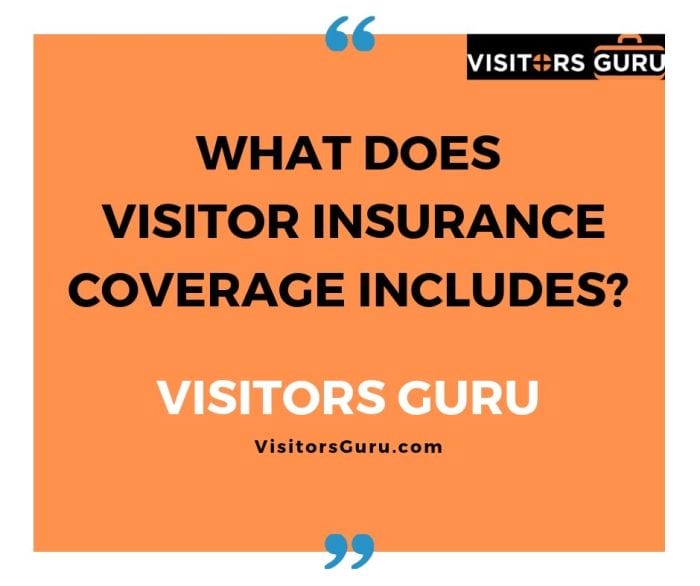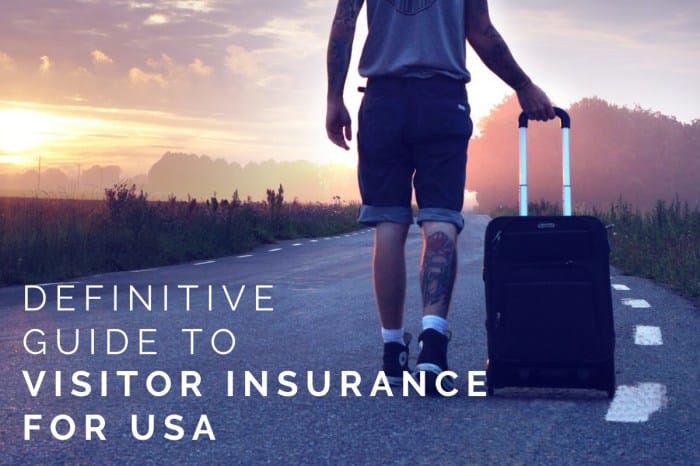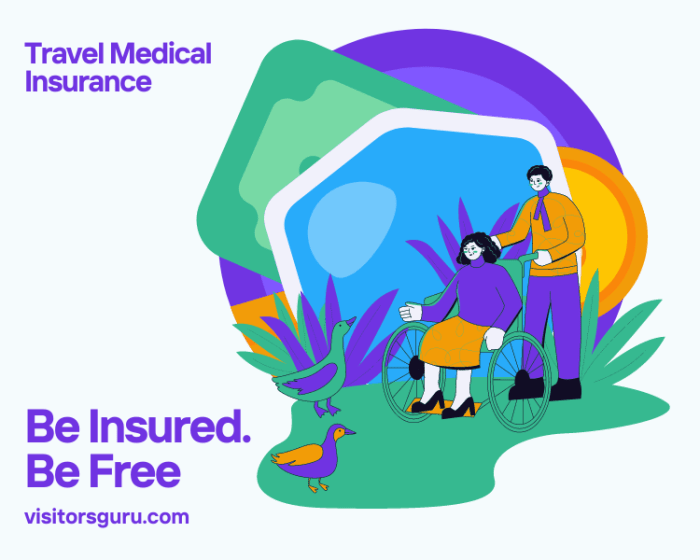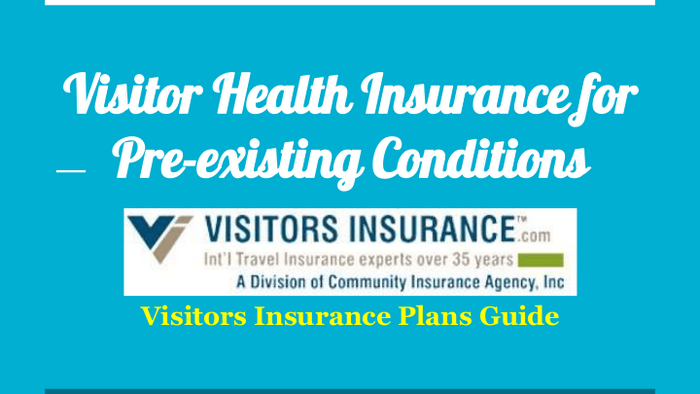Venturing into the United States as a foreign traveler unveils a world of captivating experiences. However, amidst the thrill of exploration, it’s crucial to prioritize your health and well-being. Unforeseen medical emergencies can arise, transforming an exciting journey into a stressful ordeal.
Visitor medical insurance emerges as a lifeline, safeguarding your financial security and ensuring access to quality healthcare during your stay in the USA.
Understanding the intricacies of visitor medical insurance is paramount. Dive into the depths of coverage options, unravel the factors that influence insurance costs, and embark on a quest to select the insurance plan that aligns seamlessly with your unique needs.
This comprehensive guide empowers you with the knowledge and strategies to navigate the insurance landscape, ensuring a worry-free and medically secure sojourn in the United States.
General Overview

Visitor medical insurance in the United States is a crucial safeguard for international travelers. It provides coverage for medical expenses that may arise during their stay, ensuring access to quality healthcare and peace of mind.The United States has a complex and expensive healthcare system.
In the event of an illness or accident, medical bills can quickly accumulate, potentially reaching exorbitant levels. Without adequate insurance, international travelers may face financial hardship or even be forced to forego necessary medical treatment.
Significance of Visitor Medical Insurance
- Financial Protection: Visitor medical insurance shields travelers from unexpected medical costs, providing a financial safety net in case of illness or injury.
- Access to Quality Healthcare: With insurance, travelers can access quality medical care at reputable hospitals and clinics, ensuring they receive the best possible treatment.
- Peace of Mind: Knowing that they have adequate medical coverage allows travelers to enjoy their stay in the US without the worry of potential financial burdens.
Understanding Coverage Options
Visitor medical insurance plans offer a range of coverage options to meet the unique needs of international travelers. Understanding these options can help you make an informed decision when purchasing a plan.
Typically, visitor medical insurance plans include coverage for:
- Medical Expenses: This covers expenses related to medical emergencies, including hospitalization, doctor visits, prescription drugs, and ambulance services.
- Emergency Medical Evacuation: This covers the cost of transporting the insured individual to the nearest appropriate medical facility in case of a medical emergency.
- Repatriation of Remains: This covers the cost of transporting the insured individual’s remains back to their home country in case of death.
- Accidental Death and Dismemberment (AD&D): This provides a benefit in case of accidental death or dismemberment.
- Trip Cancellation and Interruption: This covers the cost of non-refundable travel expenses in case the insured individual needs to cancel or interrupt their trip due to a covered medical emergency.
The benefits and limitations of each coverage option vary depending on the plan. It’s important to carefully review the plan details to understand what is and is not covered, as well as any exclusions or limitations.
Pre-Existing Conditions
Pre-existing conditions are medical conditions that existed before the effective date of the insurance policy. Coverage for pre-existing conditions is often limited or excluded in visitor medical insurance plans. However, some plans may offer coverage for pre-existing conditions if they are stable and well-managed.
Factors Influencing Insurance Costs

The cost of visitor medical insurance is determined by several factors that reflect the level of risk associated with providing coverage. These factors include age, duration of stay, and pre-existing conditions.
Age
Age is a significant factor in determining insurance premiums. Generally, older individuals are considered higher risk due to increased likelihood of health issues. As a result, insurance companies may charge higher premiums for older visitors.
Duration of Stay
The length of stay in the US also influences insurance costs. Longer stays pose a greater risk of incurring medical expenses, so insurance companies typically charge higher premiums for longer durations.
Pre-Existing Conditions
Pre-existing medical conditions are ailments or illnesses that existed prior to purchasing the insurance policy. These conditions are considered higher risk, as they may require ongoing treatment or medication. Insurance companies may charge higher premiums to cover the potential costs associated with pre-existing conditions.
Choosing the Right Insurance Plan

Navigating the world of visitor medical insurance plans can be daunting, but understanding your needs and comparing plans will help you make an informed decision.
Assessing Individual Needs
Start by assessing your medical history, current health status, and any pre-existing conditions. Consider your travel plans, including the duration of your stay, the activities you plan to engage in, and any specific medical needs you may have.
Comparing Different Plans
Compare various insurance plans to find one that aligns with your requirements and budget. Consider the following factors:
- Coverage Limits: Understand the maximum coverage amount for medical expenses, including hospitalization, emergency care, and outpatient treatment.
- Deductible: Be aware of the deductible, which is the initial amount you must pay before the insurance coverage kicks in.
- Coinsurance: Check the coinsurance percentage, which represents the portion of medical expenses you will be responsible for after meeting the deductible.
- Network Providers: Determine whether the insurance plan has a network of providers in the area you will be visiting. This can impact the cost and convenience of care.
- Emergency Services: Ensure the plan covers emergency medical services, including ambulance transportation and emergency room visits.
- Exclusions and Limitations: Be aware of any exclusions or limitations in the policy, such as pre-existing conditions or specific activities that may not be covered.
Making the Decision
Once you have assessed your needs and compared different plans, choose the one that best fits your requirements and provides comprehensive coverage at a reasonable cost.
Pre-Existing Conditions and Coverage

Pre-existing conditions can complicate the process of obtaining visitor medical insurance. An individual with a pre-existing condition is more likely to require medical attention during their visit, which can increase the risk for the insurance company. As a result, it’s crucial to address this issue upfront and take steps to secure adequate coverage.
When applying for visitor medical insurance, individuals with pre-existing conditions may face higher premiums, coverage limitations, or even denial of coverage. To increase the chances of securing coverage, it’s essential to be transparent about any pre-existing conditions during the application process.
Failure to disclose such conditions may result in claim denials or policy cancellation.
Strategies for Securing Adequate Coverage
For individuals with pre-existing conditions, securing adequate visitor medical insurance coverage requires careful planning and consideration. Here are some strategies to help you navigate this process:
- Research and Compare Policies: Compare various insurance plans to find one that offers coverage for your pre-existing condition. Look for policies that provide comprehensive coverage, including hospitalization, emergency care, and prescription drugs.
- Choose a Higher Deductible: Opting for a higher deductible can lower your premium costs. However, ensure that you can afford to pay the deductible if you need medical attention.
- Purchase a Short-Term Plan: If your visit is short-term (less than 6 months), consider purchasing a short-term plan that may be more affordable and still provide coverage for your pre-existing condition.
- Consider a Waiver: Some insurance companies may offer waivers for pre-existing conditions. A waiver is an agreement between the insurance company and the policyholder that excludes coverage for a specific pre-existing condition. This can lower your premium costs, but it’s important to understand the implications of having a waiver.
- Contact the Insurance Company Directly: If you have difficulty finding a plan that covers your pre-existing condition, contact the insurance company directly. They may be able to provide you with more information or help you find a plan that meets your needs.
Remember, securing visitor medical insurance with a pre-existing condition may require more effort and research. However, by following these strategies and being proactive, you can increase your chances of obtaining adequate coverage for your upcoming visit.
Tips for Cost-Effective Coverage

Navigating the complexities of visitor medical insurance in the USA can be daunting, but following smart strategies can help you obtain affordable coverage that meets your needs. Here’s a guide to securing cost-effective visitor medical insurance.
To begin with, it’s important to compare plans from multiple providers. Websites like InsureMyTrip and Squaremouth offer comparison tools that allow you to assess premiums, coverage limits, and deductibles side by side. This enables you to select a plan that aligns with your budget and healthcare requirements.
Negotiating Premiums
When it comes to premiums, negotiation is key. Contact the insurance company directly or work with an insurance broker to inquire about potential discounts. Often, insurers offer lower premiums for longer policy durations or higher coverage limits. Additionally, bundling multiple policies (e.g.,
travel and medical) with the same provider can sometimes lead to reduced rates.
Maximizing Coverage Benefits
While seeking cost-effective coverage, it’s crucial to ensure that you’re not compromising on essential benefits. Carefully review the policy’s coverage limits, deductibles, and exclusions. Opt for a plan that offers adequate coverage for medical emergencies, hospitalizations, and prescription drugs. Additionally, consider add-on benefits like trip cancellation and baggage loss coverage if they align with your travel plans.
Emergency Medical Services
Visitor medical insurance plans typically provide coverage for emergency medical services. Understanding the terms and conditions related to emergency care is crucial to ensure adequate coverage during your visit to the United States.
Coverage for Emergency Medical Services
Emergency medical services are medical treatments and procedures that are immediately necessary to prevent serious harm or death. Visitor medical insurance plans typically cover emergency medical services such as:
- Hospitalization for emergency care
- Emergency room visits
- Ambulance transportation
- Emergency surgery
- Emergency dental care
- Emergency prescription medications
It’s important to note that the coverage limits and conditions for emergency medical services may vary between different insurance plans. Carefully review the policy details to understand the specific coverage provided and any exclusions or limitations.
Claims Process and Reimbursement
Filing claims and seeking reimbursement under visitor medical insurance policies involve several steps. Understanding the process and following the guidelines can help ensure a smooth and efficient claims experience.
To initiate a claim, policyholders must gather relevant documentation, including medical bills, receipts, and a completed claim form provided by the insurance company. The claim form typically requires information such as the policyholder’s name, policy number, dates of medical treatment, and a detailed description of the medical services received.
Submitting the Claim
Once the claim form and supporting documentation are ready, they should be submitted to the insurance company according to the specified method, which may be online, by mail, or through a designated claims processing center. It is essential to submit the claim within the time frame specified in the policy, as delays may result in denied or reduced benefits.
Claims Processing
Upon receiving the claim, the insurance company reviews the submitted documents to verify the validity of the claim and determine the amount of reimbursement. This process may involve contacting the healthcare provider or conducting an independent medical review. The insurance company may also request additional information or documentation to support the claim.
Reimbursement
Once the claim is approved, the insurance company disburses the reimbursement amount to the policyholder or directly to the healthcare provider, depending on the policy terms and the method of payment chosen. Reimbursement is typically made through electronic funds transfer, check, or direct deposit.
Challenges and Tips
Common challenges in the claims process include incomplete or inaccurate documentation, delays in claim processing, and disputes over coverage. To ensure a smooth claims process, policyholders should keep detailed records of medical expenses, retain all receipts and invoices, and promptly submit the claim form with the required documentation.
It is also advisable to communicate with the insurance company throughout the process to address any questions or concerns.
Choosing a Reputable Insurance Provider

Choosing a reputable and reliable insurance provider is crucial for securing visitor medical coverage. Several factors can help you evaluate the credibility and track record of insurance companies:
Insurance Company Reputation
Research the insurance company’s reputation among customers and industry experts. Read online reviews, testimonials, and ratings to gauge customer satisfaction and experiences. Consider the company’s longevity, stability, and financial strength.
Licensing and Accreditation
Ensure that the insurance company is licensed and accredited by relevant regulatory bodies in the United States. Check for membership in reputable organizations like the National Association of Insurance Commissioners (NAIC) or the Better Business Bureau (BBB).
Financial Stability
Assess the insurance company’s financial stability by reviewing its annual reports, ratings from independent agencies like A.M. Best or Standard & Poor’s, and any available financial statements. A financially stable company is more likely to honor claims and provide reliable coverage.
Claims Handling Process
Research the insurance company’s claims handling process and reputation. Look for information on claim settlement ratios, average claim processing times, and customer satisfaction with the claims experience. A transparent and efficient claims process is essential for hassle-free coverage.
Customer Service
Evaluate the insurance company’s customer service quality by reading reviews, checking their website, and contacting their customer support representatives. Consider factors like responsiveness, helpfulness, and the availability of multiple communication channels.
Additional Resources and Information

Understanding visitor medical insurance can be complex, so it’s advisable to explore additional resources for further clarification. These resources can provide valuable insights, guidance, and support throughout your insurance journey.
Helpful Resources
Numerous organizations and websites offer comprehensive information on visitor medical insurance in the United States. These resources can assist travelers in making informed decisions and understanding the nuances of insurance policies. Some reputable sources include:
- US Department of State: Provides detailed information on visa requirements, travel advisories, and insurance guidelines.
- Centers for Medicare & Medicaid Services (CMS): Offers resources and information related to health insurance and medical coverage in the United States.
- National Association of Insurance Commissioners (NAIC): Provides consumer information, guidance, and resources on insurance-related matters.
Contact Details
For specific inquiries and assistance related to visitor medical insurance, travelers can reach out to relevant authorities and agencies. Contact details for these entities are as follows:
- US Department of State:
- Website: https://travel.state.gov
- Email: [email protected]
- Centers for Medicare & Medicaid Services (CMS):
- Website: https://www.cms.gov
- Email: [email protected]
- National Association of Insurance Commissioners (NAIC):
- Website: https://www.naic.org
- Email: [email protected]
By utilizing these resources and contacting the appropriate authorities, travelers can gain a thorough understanding of visitor medical insurance and make informed decisions to ensure their well-being during their stay in the United States.
Final Conclusion

As you embark on your American adventure, let visitor medical insurance serve as your trusted companion, providing peace of mind and financial protection. Embrace the vibrant tapestry of the USA, knowing that you’re covered against unexpected medical expenses. Remember, choosing the right insurance plan is a journey of careful consideration and comparison.
By delving into the intricacies of coverage options and understanding the factors that shape insurance costs, you’ll emerge as an informed traveler, ready to seize every moment with confidence.
Questions and Answers
What are the key benefits of visitor medical insurance in the USA?
Visitor medical insurance provides comprehensive coverage for medical expenses incurred during your stay in the United States. It safeguards you against unexpected medical emergencies, ensuring access to quality healthcare without straining your finances.
How can I choose the most suitable visitor medical insurance plan for my needs?
Selecting the ideal visitor medical insurance plan requires careful consideration of your individual needs and circumstances. Assess your health history, trip duration, and budget to identify the plan that offers optimal coverage at a premium that aligns with your financial capabilities.
What factors influence the cost of visitor medical insurance?
The cost of visitor medical insurance is influenced by several factors, including your age, duration of stay, and pre-existing medical conditions. Younger travelers and those with shorter stays typically pay lower premiums, while older travelers and those with pre-existing conditions may face higher costs.
How can I file a claim under my visitor medical insurance policy?
Filing a claim under your visitor medical insurance policy involves submitting the necessary documentation to your insurance provider. This typically includes medical bills, receipts, and a completed claim form. Ensure you adhere to the claim submission guidelines specified by your insurance company to ensure a smooth and timely reimbursement process.



